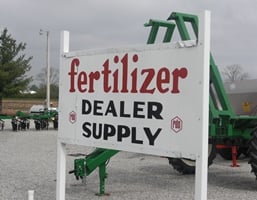The USDA is projecting the number of turkeys raised in the U.S. this year at 214 million head,...
The War in Ukraine has Altered Trade, Production and Consumption Patterns

The war in Ukraine has altered patterns so significantly that global commodity prices will keep rising in 2022 and remain at high levels through the end of 2024, according to a commodity outlook from the World Bank.
The World Bank projects global corn prices to average 20% higher in 2022 and decline 10% in 2023. Wheat is expected to rise 43% in 2022 before declining 16% in 2023. Energy prices are expected to rise more than 50% this year before easing in 2023 and 2024. If the war is prolonged, the prices could go even higher or become more volatile.
"Overall, this amounts to the largest commodity shock we've experienced since the 1970s. As was the case then, the shock is being aggravated by a surge in restrictions in trade of food, fuel and fertilizers," said Indermit Gill, the World Bank's Vice President for Equitable Growth, Finance, and Institutions, in a news release.
The report argues there are two reasons why this commodity price shock will be different than previous ones. The first is that there are fewer substitutes for the most affected energy commodities because price increases have been broad-based across all fuels.
Second, the price increases of some commodities are driving up prices of other commodities, like higher natural gas prices raising fertilizer prices and putting upward pressure on agricultural prices. Global fertilizer expenses surged 80% last year on supply disruptions, soaring input costs and trade restriction in China and Russia. The World Bank projects fertilizer prices to rise almost 70% in 2022 before easing some in 2023.
Editor’s Take:
Shocking news, especially as it relates to the size and duration of these increases. Experiencing increases of 80% in a short period of time is very concerning. It exposes the vulnerability of a “Global Economy”. Such increases for basic agricultural inputs will ultimately drive consumer prices in the grocery stores and restaurants even higher, as well. Of greater concern is the lack of availability and substitutes – a larger challenge for farmers and, ultimately, consumers. It is not our intent to push fear-mongering. We are merely pointing out strategic gaps in the system that should and must be addressed going forward. Considerations like those mentioned here should be at the top of our strategic policy list!








